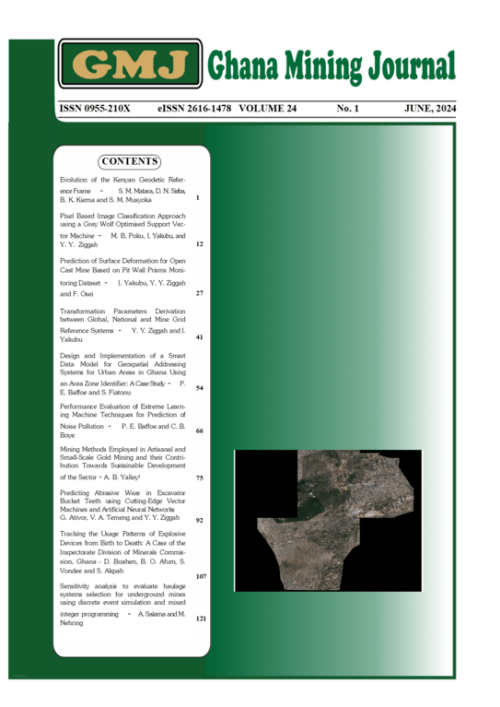Main Article Content
Performance Evaluation of Extreme Learning Machine Techniques for Prediction of Noise Pollution*
Abstract
Urban planning, epidemiology research, and environmental management have significant challenges when predicting intraurban noise levels in communities, particularly in developing nations. To accurately predict changes in noise levels during intraurban development and the resulting noise pollution, the majority of existing noise-predicting models are limited. In this study, two noise prediction models namely, Classical Extreme Learning Machine (C-ELM) and Bi-directional Extreme Learning (B-ELM) were developed for Tarkwa Nsuaem Municipality, and their performances were evaluated using statistical indicators. Using statistical measures to compare the models' performances, the B-ELM outperformed the C-ELM. The indications show the difference, with the RMSE of B-ELM being 0.87 dB and that of C-ELM being 3.67 dB. Additionally, the B-Standard ELM's Deviation and Mean Square Error were 0.80 dB and 0.1399 dB, respectively, while for the C-ELM, they were 3.73 dB and 0.06 dB. The findings of the B-ELM were used to create a map that depicts the distribution of the expected noise levels. It was discovered that there is a hazard, meaning persons who live in that region are at a high risk of experiencing adverse health impacts from noise levels above 65 dB when comparing the expected noise levels to the EPA limits.






